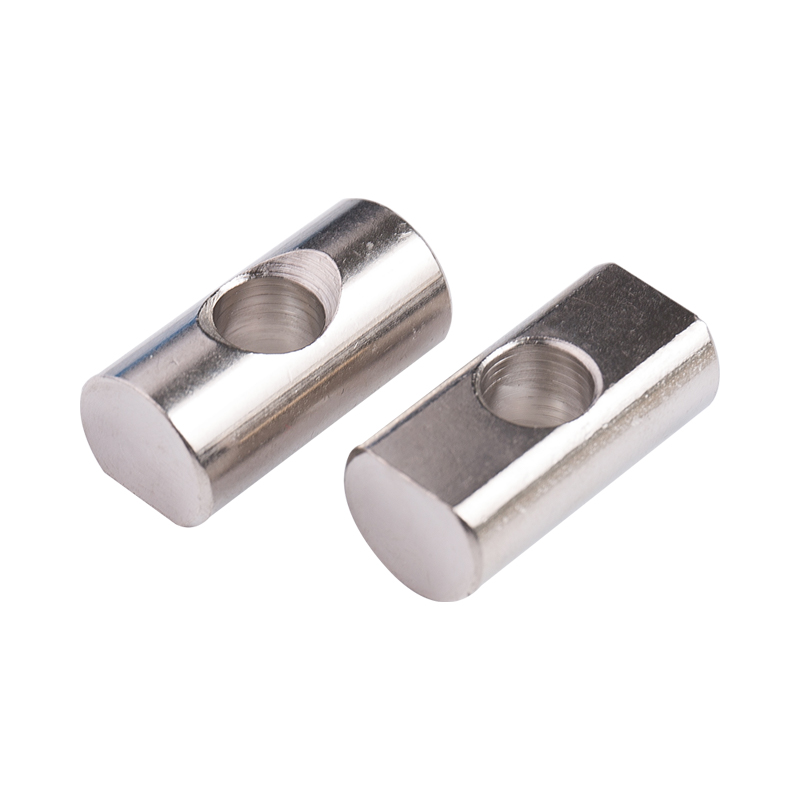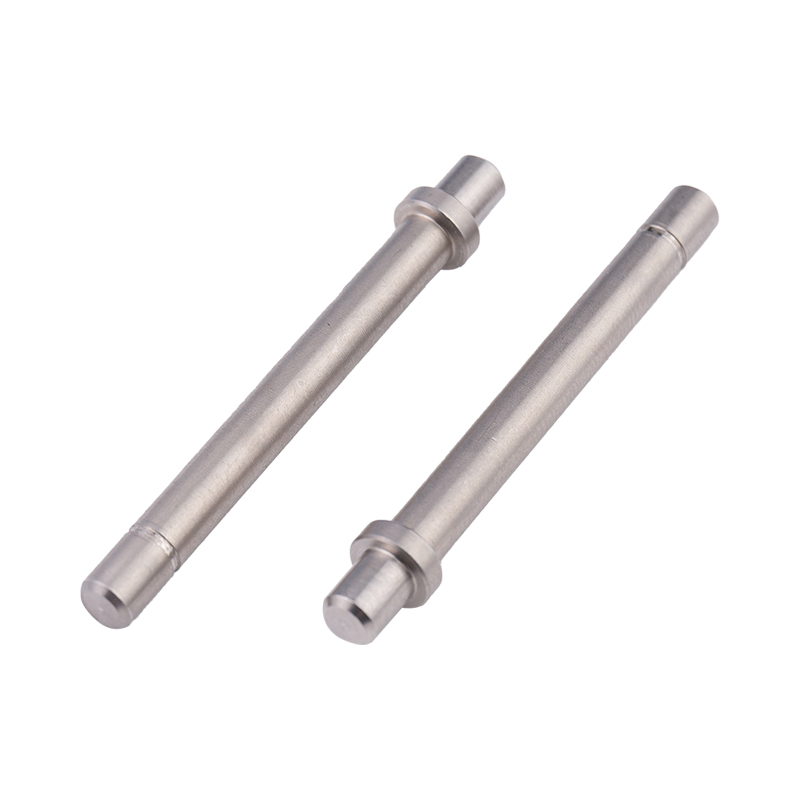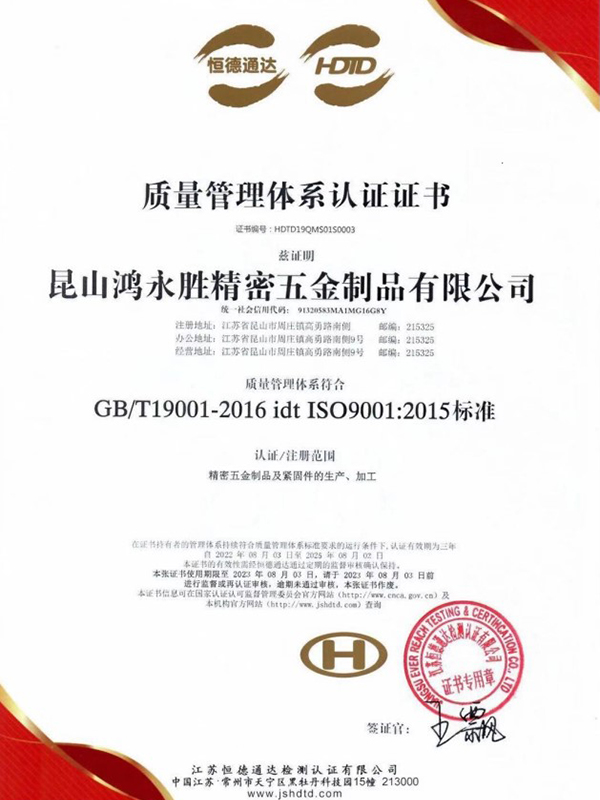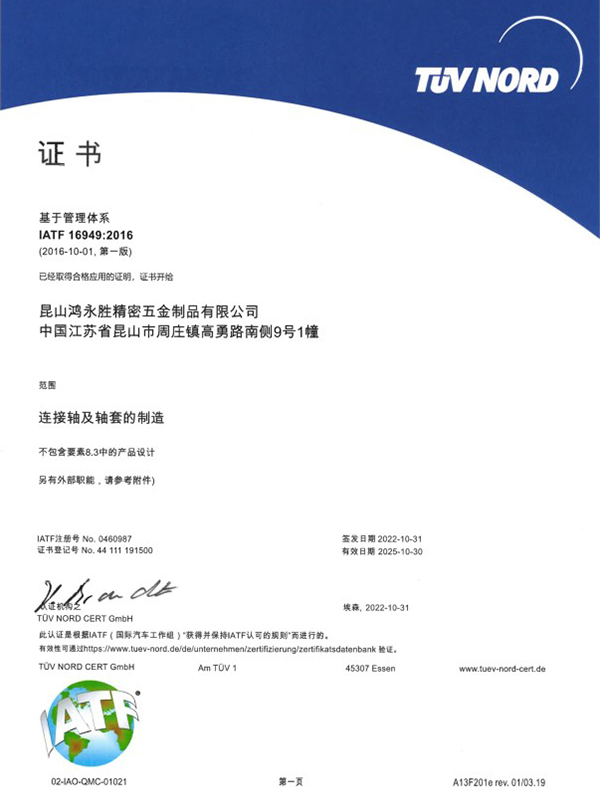Carbon Steel Bolt Supplier Guide: What Buyers Should Look For Selecting the right supplier for carbon steel bolts affects product performance, safety, and long-term cost. This guide breaks down the p...
READ MOREThe company has obtained two quality system management certificates of ISO9001:2015 and IATF16949:2016.
At present, the company has been for Japan, Sweden, the United States, Singapore, Malaysia, Hong Kong and the Pearl River Delta and many other customers to provide services, now the main customers are: Japan Sharp (SHARP), Japan SMC, Japan Panasonic (Panasonic), the Swedish automobile VOVOL, etc., all the fixed assets investment of more than 30 million dollars, welcome friends from all walks of life to the factory to visit, study, consulting and come! We welcome friends from all walks of life to visit our factory, investigate, consult and come to us for sample processing.
We are looking forward to establishing a good business partnership with you with mutual trust and reciprocity!
-
-
Introduction: The Foundation of Mechanical Systems In the intricate world of modern manufacturing and engineering, machined parts form the fundamental building blocks of virtually every mechanical sys...
READ MORE -
Why Structural Integrity Matters In construction, machinery, and other industrial applications, structural integrity is crucial for safety, performance, and longevity. One of the key elements in ensur...
READ MORE -
Introduction to Stainless Steel Fasteners Stainless steel fasteners are widely used in construction, machinery, and industrial applications due to their corrosion resistance and durability. Among them...
READ MORE
What should we pay attention to when assembling automotive carbon steel retaining pins?
In the process of automotive manufacturing and maintenance, automotive carbon steel retaining pins play an indispensable role. They are used to ensure precise alignment and secure connections between automotive components. However, assembling automotive carbon steel retaining pins is not simply an insertion process; it requires following certain steps and precautions to ensure their correct and effective operation.
Cleaning and Inspection: Before assembling automotive carbon steel retaining pins, it is essential to ensure cleanliness in the assembly area. Any oil, dust, or debris could affect the assembly quality of the automotive carbon steel retaining pins. Additionally, inspect the automotive carbon steel retaining pins and assembly holes for any damage or deformation. If necessary, replace with new automotive carbon steel retaining pins or repair the assembly holes.
Proper Selection of automotive carbon steel retaining pins: Different models and specifications of vehicles may require the use of different types of automotive carbon steel retaining pins. Before assembly, ensure that the selected automotive carbon steel retaining pins match the automotive components and assembly holes. Incorrect automotive carbon steel retaining pins may lead to assembly difficulties, inaccurate positioning, or component looseness.
Correct Assembly:
Pre-lubrication: Before assembly, apply a sufficient amount of lubricating oil or grease on the automotive carbon steel retaining pins and assembly holes to reduce friction and resistance during assembly.
Alignment: Ensure that the automotive carbon steel retaining pins align with the assembly holes, avoiding forced insertion or misalignment. Misaligned automotive carbon steel retaining pins may cause assembly difficulties or damage to components.
Moderate Force: Use appropriate tools (such as wrenches, screwdrivers, etc.) to gently push the automotive carbon steel retaining pins into the assembly holes. Avoid using excessive force to prevent damage to the automotive carbon steel retaining pins or assembly holes.
Position Check: After assembly, check whether the automotive carbon steel retaining pins are fully inserted and in the correct position. If necessary, use calipers or other measuring tools for verification.
Safety Precautions:
During the assembly process, observe safety practices. Avoid placing debris or tools in the assembly area to prevent accidents. Also, ensure that assembly personnel have the relevant knowledge and skills and follow operating procedures and safety standards.
Assembling automotive carbon steel retaining pins in automobiles requires careful attention and patience. Following the above precautions can ensure the correct assembly and effective operation of automotive carbon steel retaining pins, thereby ensuring the safety and stability of automotive operations.



 русский
русский Español
Español




